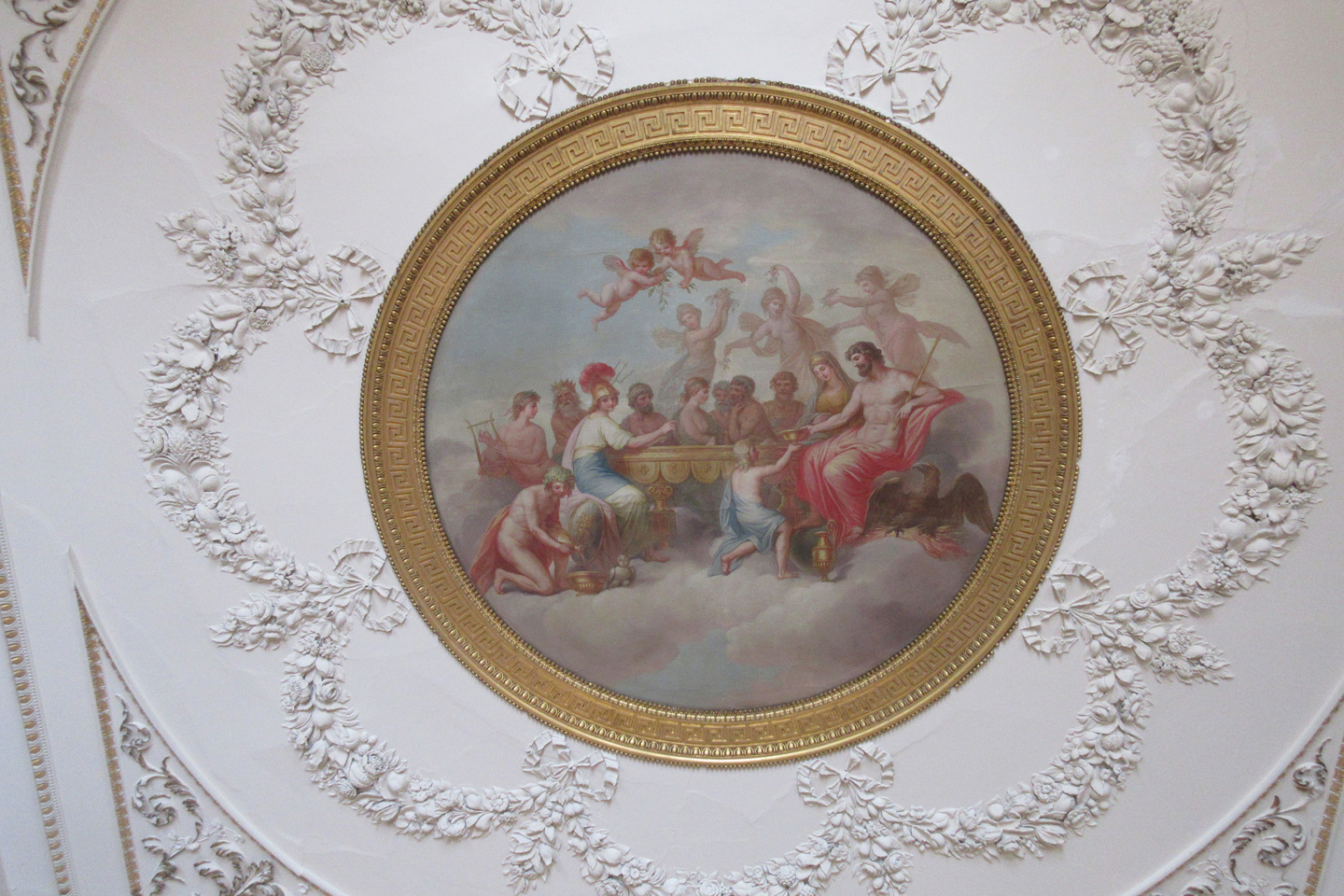October 3, 2023
What does your choice of wallpaper say about you, your tastes, your aspirations and your social status? Walk in as a guest into anyone’s living room and the furnishings and décor will help you understand your host.
When seeking to understand the significance of a place, it is important to consider interior spaces and their furnishings. Having researched and written a number of Conservation Management Plans for country houses, it is often the details found in layers of decoration, in historic inventories and in the provenance of collections that brings a greater understanding of people and the places in which they lived.
As Mark Girouard points out in his seminal book, Life in the English Country House, in the past country houses were not simply big houses for rich people to live in; they were power houses – the houses of a ruling class. They might have been the centre of power for a local squire, a “little king” in his village who ran the county alongside his fellow squires. Or they worked at a regional and national level as the seat of a landowner who was also an MP. He may have had more power in the form a gang of fellow MPs who banded together to run the country for their own interests; or they had the ear of the Monarch who could hand down favours and bestow titles.
Surviving interiors help us to understand these powerful people and the level at which they operated. The decoration of interiors is often loaded with personal symbolism, whether it’s upfront and direct, such as Bess of Harwick’s constant use of the ES (Elizabeth Shrewsbury) monogram throughout her house, or allusions, such as M.P. Thomas Harley’s use of classical allegories at Berrington Hall which refer to his political, financial and marital connections.
Surviving furnishings can tell us even more, the Long Gallery at Hardwick is truly brought to life by the cinematic scale of the Gideon tapestries which line its walls. That we know that Bess bought them in 1592/3 from Sir Christopher Hatton and that the dimensions of the room were designed around them is even more extraordinary. Hardwick Hall is an exemplary example of a family (the Dukes of Devonshire and in particular the 6th Duke) using a house to display their family history over a long period of time. Of course, they were able to create this homage to their heritage as Hardwick was merely a “second home”, Chatsworth was where they created their contemporary expressions of self.
Put into context with the fabric of a building, surviving interiors and collections (no matter how fragmentary) enhances our understanding of people who lived in the past. Of course, survival is often skewed toward the elites in society. However, it is important to remember that country houses, of any size, contain working class and diverse histories, whether related to the lives of people in service, people working on the estates which surrounded them; or in the factories, mines, colonial trades or plantations which supplied the wealth, which went on to purchase valuable artworks, commission ensuite furnishings and to create fashionable interiors.



